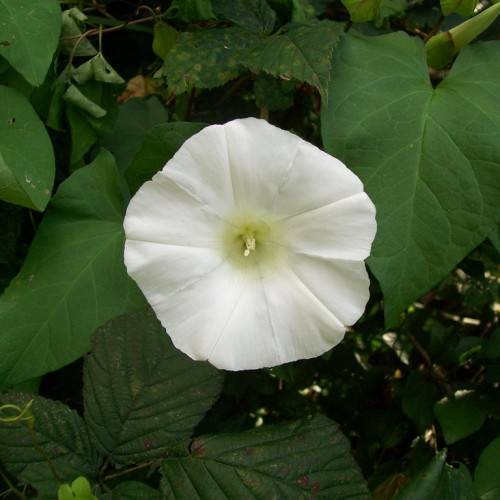
Short-Stalked False Bindweed
Calystegia silvatica
Watering:
Frequent
Hardiness Zone:
Sun:
full sun,part shade
Fruits:
Fruits Ready In Fall
Leaf:
Yes
Growth Rate:
Low
Invasive:
Yes
Care Level:
Medium
watering
It is important to water Short-Stalked False Bindweed plants regularly to ensure they remain healthy and prolific. The best way to water this species is to provide a deep soak once a week. This is critical in the spring and summer months, as the soil should be kept moist, but not saturated. The frequency of watering should be reduced in the late autumn and winter months to once every 2 weeks but with the same amount of water to ensure the soil stays moist but not soaked. It is important to avoid over-watering False Bindweed, as this can lead to root rot and poor plant health.
sunlight
Calystegia silvatica, or short-stalked false bindweed, is a herbaceous vining plant that thrives in USDA hardiness zones 2 through 10. In order to support optimal growth, short-stalked false bindweed requires 6 to 8 hours of direct sunlight per day. Morning illumination is especially beneficial; if plants are unable to receive morning sunlight, they should receive it in the late afternoon instead. Direct sunlight for as little as 2 hours per day can also be beneficial. It is important to bear in mind that direct sunlight is most beneficial, while dappled sunlight may not provide enough nourishment for healthy growth.
pruning
The optimal time and amount for pruning Short-Stalked False Bindweed vary depending on the objectives of the gardener. Generally, pruning should take place during the late winter and early spring when the plant is dormant. For growth control, you should prune the plant back to the main stems or where buds break from main stems. This will ensure the plant does not become too large and dense. Pruning of this species can also be used to control flowering, and should involve removing thick stalks and buds if necessary. For aesthetics, pruning can be done to keep the plant from spreading too far, especially if it is growing in an area where it is not wanted. Pruning can also be used to keep the overall shape of the plant more tidy. When pruning for aesthetics, it is best to concentrate on shortening and thinning the stems. This will help the plant maintain a neat and attractive appearance. In summary, the optimal time to prune Short-Stalked False Bindweed is during the late winter and early spring. Pruning can be used for growth control or aesthetics, depending on the gardener’s objectives. Generally, growth control pruning should involve cutting back to main stems or buds, whereas pruning for aesthetics should focus on shortening and thinning stems.
